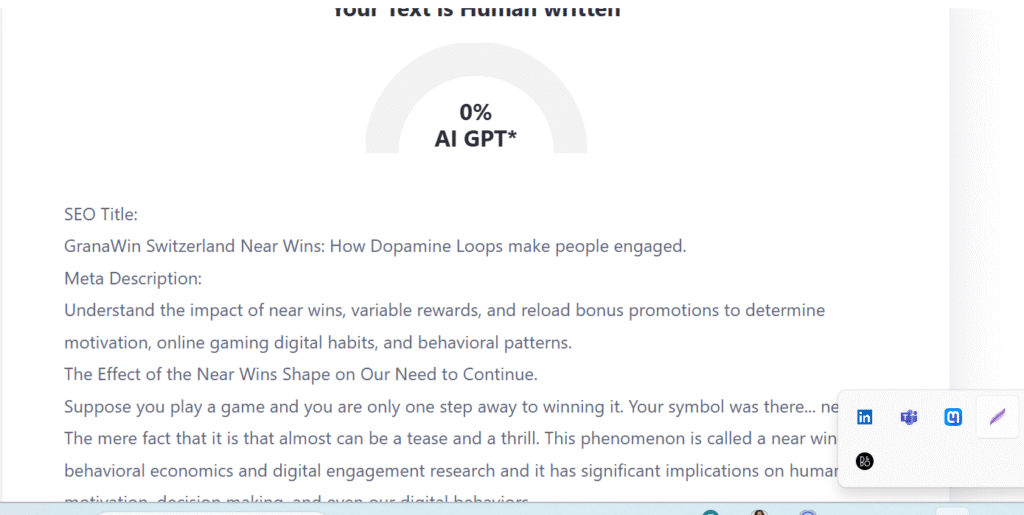The Effect of the Near Wins Shape on Our Need to Continue.

Suppose you play a game and you are only one step away from winning it. Your symbol was there… near. The mere fact that it is almost can be a tease and a thrill. This phenomenon is known as a near win in behavioural economics and digital engagement research, and it has significant implications for human motivation, decision-making, and even our digital behaviours.
The Pull of the “Almost”
Close calls exist everywhere, not just in casinos. Imagine trying to win a game in a mobile application or racing to claim the final reward in an app. The human brain processes near wins as though they were partial wins, causing excitement and compelling us to make another attempt. This is not mere wishful thinking, but it is entrenched in our psychology.
Near misses capitalize on cognitive biases, such as our overestimation of probability or attributing near misses as evidence of skill instead of chance. The pull can be felt even by experienced players: we continue to play, trying to achieve that slight margin that determines success or failure. Digital platforms, such as GranaWin Switzerland, implicitly understand this and provide opportunities to experience environments that simulate near-win situations and variable rewards, ensuring high engagement without necessarily putting the player at risk.
What Happens in the Brain
Neuroscientific, near-win activity is observed in the ventral striatum, a crucial component of the brain’s reward circuitry. The dopamine fills the system — not due to a victory, but because the brain perceives close calls as a learning reward or an opportunity to advance. That is, you get almost it, says your brain. Keep going. You can do it next time.”
It is this dopamine loop that makes variable rewards that much more compelling. It is the same algorithm that drives online interactions in applications, game-based activities, and even social networking alerts. The brain is fond of the unexpected. The expectation of success is, at best, instant gratification, and it can also lead to decision fatigue when unchecked, without a promise of success.
Proximity to Wins in Digital Environments.
The digital media has mastered the art of using near-wins. For example, online gaming sites, especially in Switzerland, use displays such as GranaWin Switzerland, which creates a visual and auditory stimulus that mimics a heart-stopping, close-up experience. It does not have to be about making anyone go crazy and bet; rather, it is about how to perceive the behavioural patterns and create a rewarding experience, even when it is not a full win.
Another minor incentive is reload bonus promotions. They further expand the playing time by providing the user with the opportunity to continue playing and earn additional rewards. Although a bonus may not result in a win, the closer people get to winning, the more they reinforce the behavioural loop that will bring players back again and again.
These mechanisms are present in all places, outside of the traditional gambling setting. Fitness applications, learning applications, and loyalty programs utilize near-win dynamics to keep users engaged. The theory of psychology does not change: variable rewards and perceived progress will equal persistence.
Expert advice on the mechanics of persistence.
Behavioural economists observe that near misses provide an interesting convergence between psychology, neuroscience, and digital design. Dr Decision-making expert Anita Vermeer discusses: Near wins are not only matters of chance, but what the brain perceives as progress. Even a small success will elicit a dopamine response that stimulates action.
Behavioural scientists warn that near wins are indeed powerful motivators, but they also require mindfulness. Within a digital context, understanding these triggers can enable users to interact responsibly without becoming overwhelmed by the urge to win that variable rewards can create.
The mechanics of near wins, outside the casino floor, influence how we approach challenges, whether it is in games or goal tracking. They shed light on the threads between motivation, habit formation, and cognitive bias, which provides a better insight into how we occasionally pursue “almost” as vigorously as actual goals.

